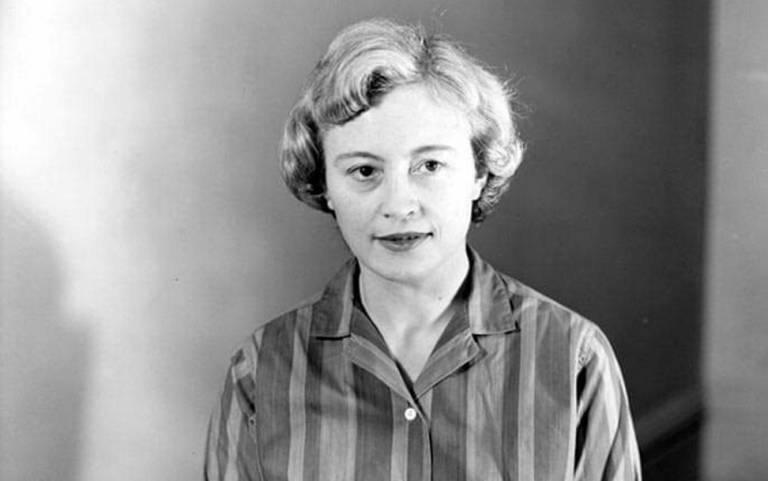Tributes to trailblazing astronomer Professor Margaret Burbidge
15 April 2020
Academics have paid tribute to Professor Margaret Burbidge (nee Peachey), UCL alumna and former UCL Observatory staff member who played a key role in our understanding of the origin of chemical elements synthesised in stars, following her death at the age of 100.

A groundbreaking astrophysicist, Margaret studied both as an undergraduate and postgraduate at UCL, completing her PhD in 1943, and working at the UCL Observatory during World War II.
Margaret started work at the UCL Observatory (then University of London Observatory) in a period where most staff were away on wartime duties and the London blackouts facilitated astronomical observations. In August 1944, her work at the observatory was twice interrupted by V-1 flying bomb explosions nearby. During this time, Margaret continued her observations on Be stars with then director C.C.L Gregory and took over the running of the observatory shortly before leaving for the United States.
The work Margaret is most famous for is the “B2FH” paper (named after the initials of Burbidge, Burbidge, Fowler & Hoyle) in 1957 where Margaret outlined the pillars of stellar nucleosynthesis – the origin of chemical elements synthesized in stars – and how we understand it today.
During her career, Margaret had to overcome constant gender discrimination whilst breaking through most glass ceilings in her field. From a gender-specific fellowship at Mount Wilson Observatory, to observatory living arrangements when Margaret joined her husband Geoffrey in observation campaigns.
In 1972, Margaret turned down the Annie Cannon fellowship awarded by the American Astronomical Society (AAS) as a protest against positive discrimination. In 1976, she became the first female president of the AAS, during which she convinced the members to ban AAS meetings in states, which had not ratified the Equal Rights Amendment to the US Constitution.
During 1972, while on secondment from the University of California San Diego, she became the first woman Director of the Royal Greenwich Observatory on which occasion the post, previously held for 300 years by the Astronomer Royal, was split.
Margaret served in a number of high-profile posts in the international astronomical community and contributed to the development of the Faint Object Spectrograph on the Hubble Space Telescope.
UCL Observatory Director, Professor Giorgio Savini (UCL Physics & Astronomy), said: "Her war-time observation logs are a source of inspiration to – Keep Calm and Carry on Observing – in the face of hardship and dark times."
Head of Astrophysics, Professor Serena Viti (UCL Physics & Astronomy), said: "Her seminal and extremely influential work on the origin of the chemical elements is just one of the many examples of how she influenced generations of astronomers – and having achieved this when women were mostly overlooked is truly remarkable."
She will be remembered in the community, at the UCL Observatory and by amateur astronomers who can observe Asteroid 5490 Burbidge.
 Close
Close

